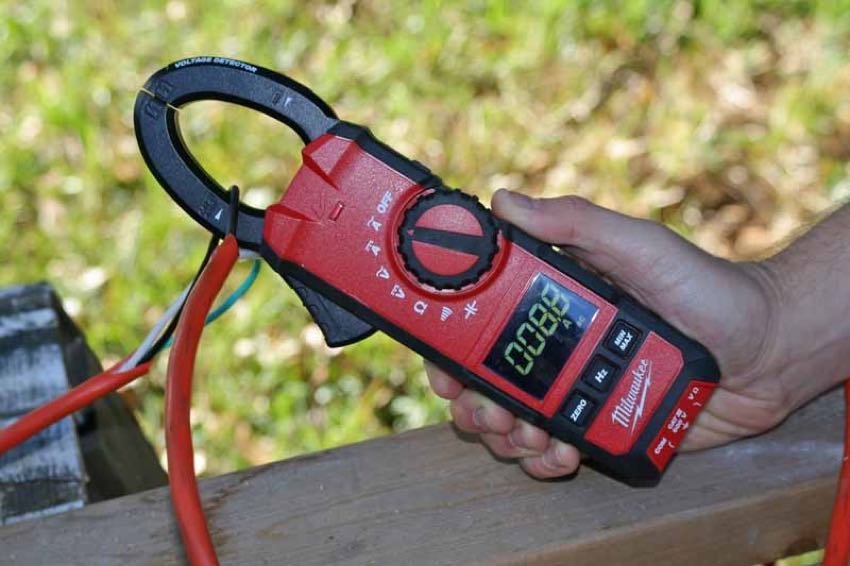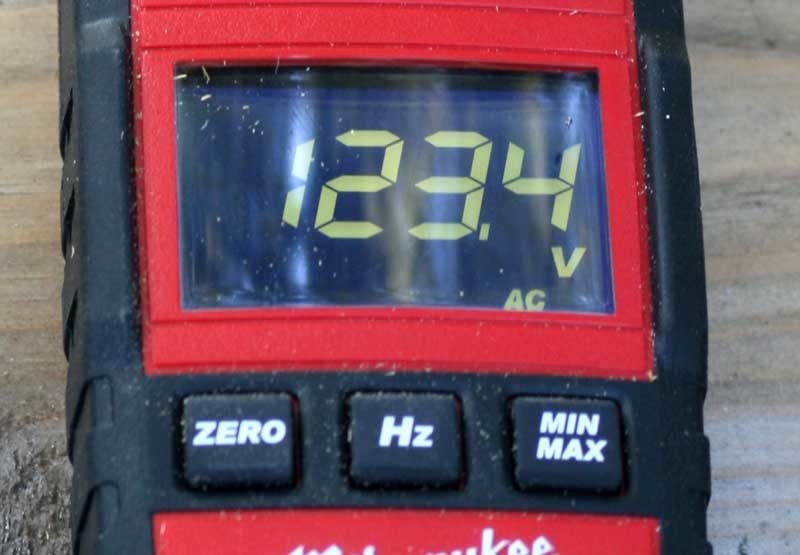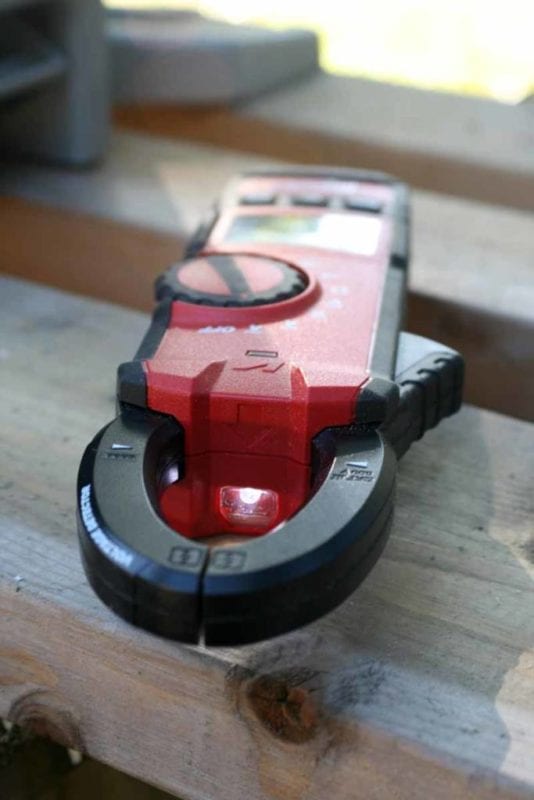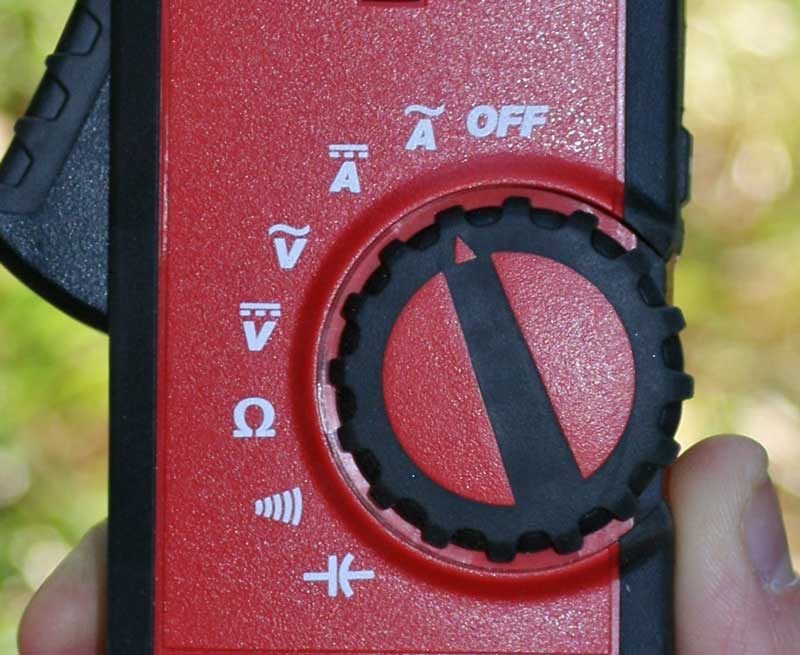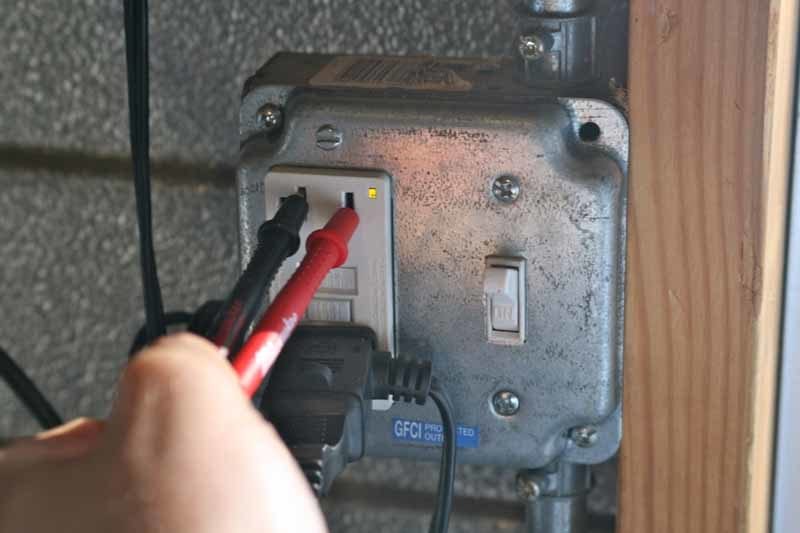In my time I’ve used a lot of meters. Ever since my first home, I’ve installed enough circuits and cabling to rewire half a city block. I’ve had a trusty Fluke meter for some time as well as a number of generic voltmeters and such that have done the job sufficiently, albeit with varying degrees of convenience and accuracy. What fascinated us about the new line of Milwaukee Clamp Meters was the number of convenient features bundled into a CAT III-rated UL-certified solution. It seemed to be an excellent one-tool-fits-all solution for most journeymen. In particular, the Milwaukee True RMS Clamp Meter 2237-20, with its True RMS resolution, integrated LED light, non-contact voltage detector, and reverse white-on-black LCD display, has proved to be one of the easier meters we’ve ever used.
Milwaukee True RMS Clamp Meter 2237-20 Features
This review is going to be short, largely because – unlike a scope or some other more sophisticated measurement device – the Milwaukee True RMS Clamp Meter 2237-20 is a rather simplistic device like its sister product, the Milwaukee True RMS 2205-20 fork meter. What sets this clamp meter apart is its True RMS scale, CAT III 600V rating, UL certification, and host of convenience features.
The first and most obvious feature has to be spoken of first – and that’s the reverse white-on-black high contrast LCD screen. It’s beautiful and ingenious. It works in full sunlight as well as low light situations and ensures you can read this thing in any sort of environment. The only way to make it more readable would be to include braille.
That alone would be pretty cool, but Milwaukee added an LED light that is activated by a side-mounted button as well as a non-contact voltage detector that lets you simply get the clamp jaws close to a voltage source and the centrally-mounted red LED lights up to let you know the line is hot. Speaking of the clamp jaws, they are activated easily by a mechanical lever that we found easy to use – along with all the other functions – with gloved or naked hands. The jaws open to reveal a 1.3″ gap – wide enough for even some of the thickest cable you’re likely to measure in a CAT III tool application.
Editor’s Note: Please read our article on Electrical Measurement Categories
Dialing in Modes
A dial sits offset on the Clamp Meter and features a rubberized coating, allowing you to rotate it easily to measure AC/DC Current, AC/DC Voltage, Resistance, Capacitance, and Continuity. The rotary dial is offset, lending this to be a largely one-handed tool. The Milwaukee True RMS clamp meter 2237-20 seems to get readings quickly and dial them down into a stabilized reading in a reasonably short interval (for digital). The fact that this is a true RMS meter means that those measuring voltage or current in variable speed motors (think HVAC systems) and other switching equipment will be able to get an accurate reading.
So what else does it have? Well, Milwaukee coated the tool in a black rubberized coating to allow it to be gripped in almost any situation. The additional benefit is that it is rated to survive a 1-meter drop test. Not a bad feature for a device that’s certain to get its share of bumps and falls in the field. Functionally, we also liked the presence of a Zero function and a Min/Max button for recording the highest reading made by the tool in a session (a function we used several times in our testing and experimentation).
A side-mounted Hold button also lets you capture the current reading so that you can remove the tool and reference the measurement as needed. A Hz button allows you to check frequency when measuring current (50A or more) and Voltage (at least 40V). The only thing we didn’t find was a way to store the included probes. With everything else, it was a shame they didn’t come up with something there but, as Milwaukee informed us, this was a decision made to keep the tool more compact and cater to its primary intended use.
Testing and Usage
We used the Milwaukee True RMS clamp meter 2237-20 to perform a series of voltage measurements while completely rewiring a 1920 colonial-style home to bring it up to code. This was the perfect opportunity to give these tools a test run as it involved a series of very critical and difficult work. Why so difficult? Well, for starters, the home is two-story and involves over 3000 square feet of living space. Secondly, we were rewiring the house in stages (it had already received an updated 300-amp AC panel box some years back), so there is a level of difficulty in planning out your new circuits while keeping old ones alive.
Our use of this tool included:
- DMM (digital multimeter functions for checking voltage)
- Current load and rough inrush checking to determine the existing circuit loads*
- Verification of correct voltage and wiring on new circuits
- Safety checks on the electrical box to ensure power was correctly disconnected
- Non-contact voltage checks on existing and new circuits
*For true inrush current measurements, you’ll want to use the 2239-20 Clamp Meter
Checking Current Draw
The most popular use of the tool, by far, was checking the current draw on several circuits when deciding on how best to layout the home. It was great to not only plan ahead for how the circuits would be used but to also be able to verify that the load was indeed as expected. It also revealed several existing circuits which were simply too widespread and topping out the maximum load we’d want for them (we worked on those first).
This work is still underway, but we also managed to depart for an afternoon and use the Milwaukee True RMS Clamp Meter 2237-20 to measure the current draw on a miter saw. We found that a new 12-inch compound miter saw we were testing drew 8.8 amps unloaded, but picked up to 11.4 amps when cutting through a single pressure-treated piece of 4×4. Peak current was a healthy 28 amps, but of course, this tool doesn’t have a specific inrush mode (pick up the 2239-20 for that functionality), so that measurement was just for the fun of testing the Max button on the tool.
Conclusion
The Milwaukee True RMS Clamp Meter 2237-20 is part digital multimeter, part clamp meter, part LED work light, and part non-contact voltage detector. It’s a very well-rounded tool that, with its True RMS rating, means that HVAC installers and electricians of every sort will find it to be an extremely robust solution for multiple applications. It’s easy to see this tool being carried along with journeyman and pros to the jobsite – it’s a simple, ergonomic product that’s a bit of a swiss army knife. Overall, this tool does what it says and does it well. While you have a lot of options in this market, even for True RMS models, the convenience features put it towards the top end of the scale—even with a ~$230 price tag.

